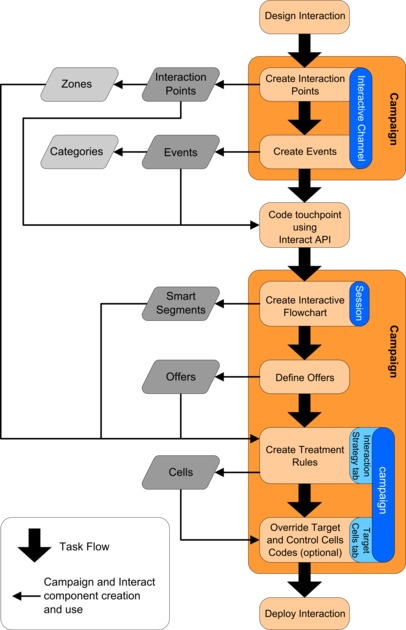|
|
Design-During the design phase you brainstorm about what kinds of interactive marketing strategies you would like to use. After you have an idea about what you want to have happen in your touchpoint, you need to determine how to implement that with Interact. This brainstorming is a cooperative effort between the person managing the touchpoint and the person designing the marketing plan. Using business goals and target metrics, they can create a list of interaction points and zones, and a rough list of segmentation and suppression strategies. These discussions should also include the data required to perform the segmentation.
|
